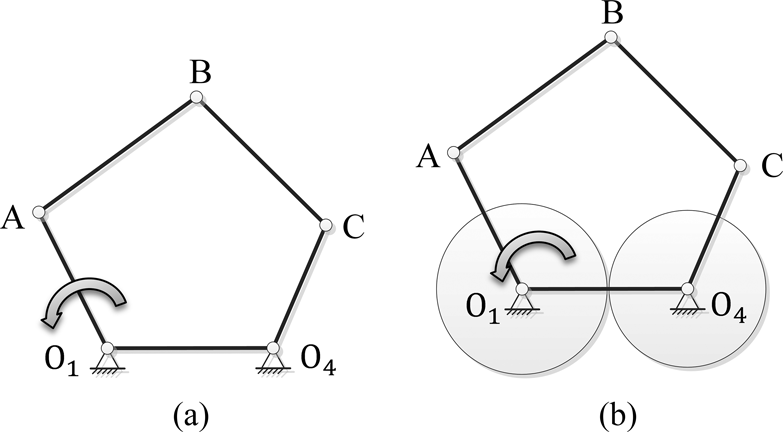Dynamic analysis of a translating five-bar linkage mechanism.

Abstract
In this paper, the dynamic analysis of a translating five-bar linkage mechanism is presented. The dynamic model of the machine is developed with the applied force to the crank arm resolved into the two principal planes, that is, x- and y- directions, and the resulting reaction forces and moments at the pin joints determined at various translating acceleration of 0, 10, 20, 30 and 40 m/s2 in the direction as well as in the opposite direction of the crank rotation. It was observed that the horizontal reaction forces at the pin joints were decreasing as the translating acceleration increased in the direction of crank rotation while it increases when the acceleration increased in the opposite direction to the crank rotation. It was also observed that the pin joint moments at point A decrease as the translation velocities increase in the crank arm rotation direction while it increases as the acceleration increases in the opposite direction. The converse is the case for pin joint B, while there were no significant differences for pin joint moments at pin joints C and D in all the considered acceleration in both directions. Also, the vertical reaction forces at the pin joints did not change in magnitude as the magnitude and directions of the acceleration were altered. The analysis brings to the fore the importance of the consideration of translating acceleration in the design, development, and utilization of five–bar linkage to avoid failure at any of the joints.
Summary
Category:
Academician:
Adeshola Oluremi Openibo, Antonio Siqueira, Gbeminiyi Sobamowo
Lead Professor:
Arinola Ajayi
Patent Level:
Patent
Project Stage:
Type Of Researcher:
Institution







